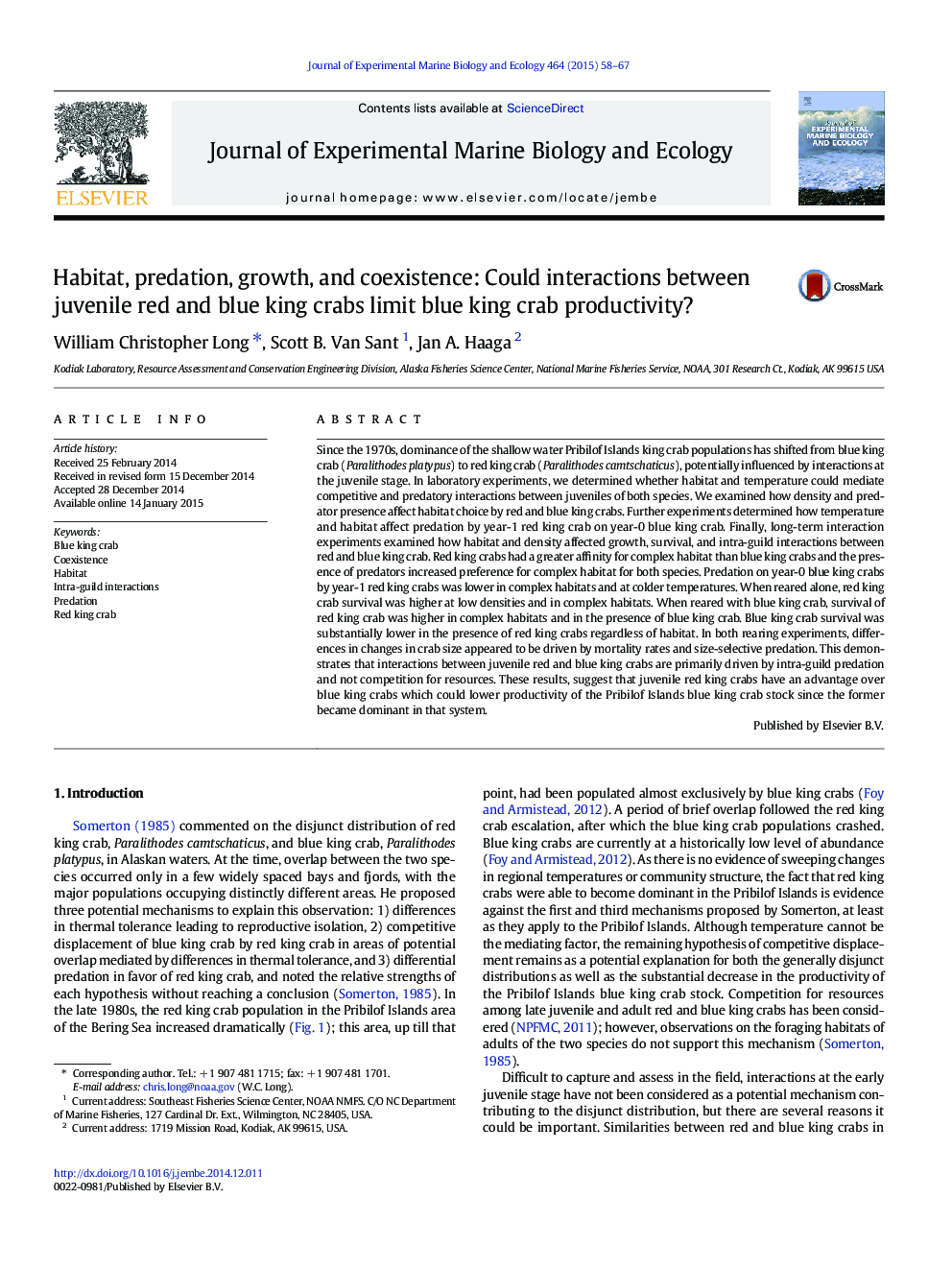| کد مقاله | کد نشریه | سال انتشار | مقاله انگلیسی | نسخه تمام متن |
|---|---|---|---|---|
| 4395457 | 1618411 | 2015 | 10 صفحه PDF | دانلود رایگان |
عنوان انگلیسی مقاله ISI
Habitat, predation, growth, and coexistence: Could interactions between juvenile red and blue king crabs limit blue king crab productivity?
ترجمه فارسی عنوان
محل سکونت، شکار، رشد و همزیستی: آیا تعامل بین سربازان قرمز و آبی کوچک نوجوانان توانایی تولید خرچنگ آبی رنگ را محدود می کند؟
دانلود مقاله + سفارش ترجمه
دانلود مقاله ISI انگلیسی
رایگان برای ایرانیان
کلمات کلیدی
خرچنگ پادشاه آبی، همزیستی، زیستگاه، تعاملات درون سازمانی، پیشگویی، خرچنگ شاه سرخ،
موضوعات مرتبط
علوم زیستی و بیوفناوری
علوم کشاورزی و بیولوژیک
علوم آبزیان
چکیده انگلیسی
Since the 1970s, dominance of the shallow water Pribilof Islands king crab populations has shifted from blue king crab (Paralithodes platypus) to red king crab (Paralithodes camtschaticus), potentially influenced by interactions at the juvenile stage. In laboratory experiments, we determined whether habitat and temperature could mediate competitive and predatory interactions between juveniles of both species. We examined how density and predator presence affect habitat choice by red and blue king crabs. Further experiments determined how temperature and habitat affect predation by year-1 red king crab on year-0 blue king crab. Finally, long-term interaction experiments examined how habitat and density affected growth, survival, and intra-guild interactions between red and blue king crab. Red king crabs had a greater affinity for complex habitat than blue king crabs and the presence of predators increased preference for complex habitat for both species. Predation on year-0 blue king crabs by year-1 red king crabs was lower in complex habitats and at colder temperatures. When reared alone, red king crab survival was higher at low densities and in complex habitats. When reared with blue king crab, survival of red king crab was higher in complex habitats and in the presence of blue king crab. Blue king crab survival was substantially lower in the presence of red king crabs regardless of habitat. In both rearing experiments, differences in changes in crab size appeared to be driven by mortality rates and size-selective predation. This demonstrates that interactions between juvenile red and blue king crabs are primarily driven by intra-guild predation and not competition for resources. These results, suggest that juvenile red king crabs have an advantage over blue king crabs which could lower productivity of the Pribilof Islands blue king crab stock since the former became dominant in that system.
ناشر
Database: Elsevier - ScienceDirect (ساینس دایرکت)
Journal: Journal of Experimental Marine Biology and Ecology - Volume 464, March 2015, Pages 58-67
Journal: Journal of Experimental Marine Biology and Ecology - Volume 464, March 2015, Pages 58-67
نویسندگان
William Christopher Long, Scott B. Van Sant, Jan A. Haaga,
